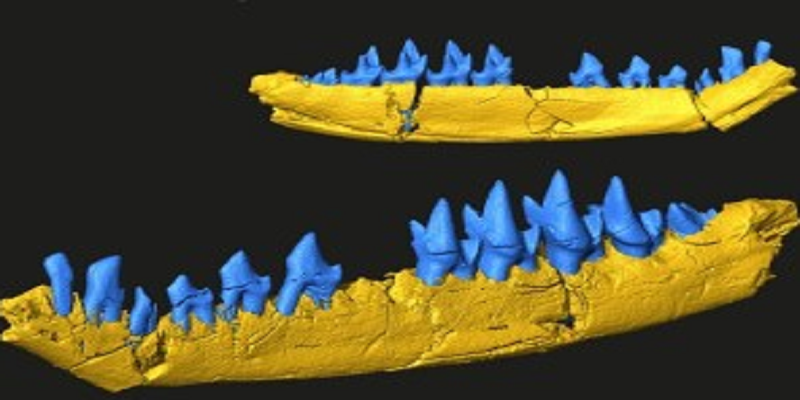New species are being discovered all the time. Some are alive today, and some have been extinct for millennia, their existence only being documented long after they are gone. It’s not often, however, that the vast catalog of animal and plant species diminishes based on new information. Dr. Roger Close, a postdoctoral research associate and vertebrate paleobiologist at the University of Oxford, recently made discovered that three species, previously thought to coexist, may likely only have been one tiny animal.
About two weeks ago, Dr. Close published a research paper documenting the discovery of a fossilized jaw belonging to Palaeoxonodon ooliticus, a Middle Jurassic mammal about the size of a mouse. Dr. Close and his research team found the 170-million-year-old fossil on the Isle of Skye in Scotland. Individual teeth had been found previously, but they had been thought to belong to three different species. With the help of 3D printing and scanning technology, Dr. Close and his team realized that Palaeoxonodon ooliticus may have been the owner of them all. The best part is that they were able to come to that conclusion without ever having to remove the fossil from the rock in which it was embedded.
“As recently as ten years ago it would have been standard practice to expend a considerable amount of time and effort manually removing the fossil from the hard limestone rock,” Dr. Close said. “However, we were able to use an X-Ray Computed Tomography (CT) scanner at the Natural History Museum in London to obtain an amazingly detailed three-dimensional image of the specimen, so all the preparation could be done digitally.”
After the scan was taken, Dr. Close ordered a 3D print of the fossil from i.materialise. The actual jawbone is only millimeters in size, but the polyamide print was scaled up to 20 times its size so that it could be more easily studied. Tiny details, invisible before, were now clear and obvious.
“The fact that the model could so easily be scaled up to 20 times its original size made it all the more fun,” said Dr. Close. “I found that being able to scrutinize a 3D print was genuinely helpful while describing the anatomy of the fossil for publication, as it highlights features that might not be immediately apparent on a computer-screen rendering.”
Dr. Close, for his part, is hooked. He had assisted colleagues in processing 3D scans of fossils in the past, which they had then used to order prints from i.materialise, but Palaeoxonodon ooliticus was the first specimen he printed for his own research. Along with enhancing his research capabilities, the 3D print also gave him some serious cool points among his peers.
“The best thing about having a 3D print of the fossil was that I could show the specimen off to colleagues and friends,” said Dr. Close. “Virtually everyone who saw it was amazed, particularly when they heard that the model had only cost a tenner!”
Let’s hear your thoughts on the work by these researchers in the 3D Printing Tiny Bones forum thread on 3DPB.com.
